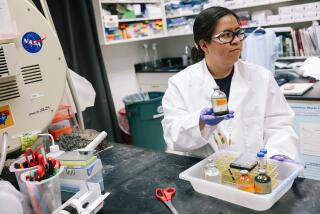JPL: Looking Forward
Fifty years ago today, a group of students of Caltech’s Theodore von Karman went to a deserted spot in the Arroyo Seco north of the Rose Bowl, dug trenches, piled up sandbags and attempted to test a rocket motor they had built. Three times they lit the motor without success. On the fourth try, the engine ignited for a few seconds, but the oxygen hose caught fire and broke, and the students ran for their lives. Catastrophe was prevented when safety valves shut.
This inauspicious beginning marked the start of rocketry in California at a time when few “experts” thought there was any reason to pursue it. Only three years before, the noted astronomer Forest May Moulton had written, “The difficulty of escaping the earth’s gravity is insuperable . . . Such adventures will (n)ever pass beyond the realms of fancy.”
Fortunately, the students, including Frank J. Malina, Apollo M.O. Smith, Edward S. Forman John Parsons, Hseu-shen Tsien and Weld Arnold, persevered, and the site of their early experiments eventually became a permanent facility called the Jet Propulsion Laboratory. In the decades since, the laboratory has made an extraordinary contribution to rocketry and to mankind’s exploration of space.
Even before JPL was formally created in 1944, engineers working at the site had developed and tested the first solid-fueled and liquid-fueled rockets. By 1945, their WAC Corporal missile was launched from White Sands, N.M., to a record altitude of 43.5 miles.
JPL’s story is a history of the space age. In 1958, it built and launched Explorer 1, America’s first successful satellite, and in 1962, the lab sent Mariner 2 to survey Venus, the first mission to another planet. There were Rangers and Surveyors to the moon in the 1960s, Mariners and Vikings to Mars and more recently, Voyagers to Jupiter, Saturn and Uranus. If the budget of the National Aeronautics and Space Administration allows--and it should--there will be more explorations of the solar system and the universe in the future.
It is sometimes hard to remember that within the lifetimes of people still living, the Wright brothers first flew. In two decades, JPL went from experiments to orbit. Without that laboratory near Pasadena, we might still be Earth-bound. Who dares guess what the next 50 years will bring?






